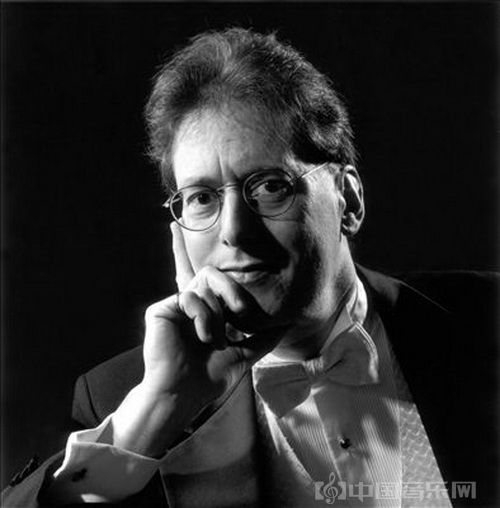莫扎特钢琴音乐的即兴演奏风格---哈佛大学音乐系教授罗伯特·列文的讲座听后感
张忻忻 / 文
来自哈佛大学音乐系的著名教授罗伯特·列文在印第安纳大学的奥尔音乐厅里举办了一场关于莫扎特音乐即兴演奏风格的讲座。笔者有幸现场聆听。列文教授以演奏古典时期贝多芬及莫扎特的作品见长, 并撰写了多篇有关古典乐派装饰音与华彩的即兴演奏方面的论文,在美国音乐界有着广泛影响力。此次列文教授将讲座的重点放在莫扎特钢琴音乐即兴演奏部分的剖析和如何有效训练即兴演奏的能力。
古典乐派兴起于18世纪下半叶,这一时期的音乐风格对比之前的巴洛克时期要简约自然,在音乐织体上去繁从简,复杂的复调音乐逐渐被单旋律音乐(homophonic)取代,通常以一种清晰的旋律线条配上和声伴奏的模式呈现。另外,古典时期的音乐语汇更加丰富多变,对比鲜明,在调式,旋律,节奏,力度,音色,及表现力等方面的运用上增加了多样性。作为古典乐派的代表人物,莫扎特以其神童的天赋创作出如同天籁般的歌唱性旋律而闻名于世,在他的钢琴音乐创作中,同样显现出天才对于旋律的创造力和想象力,很多重复性的旋律都被加以修饰或被改写,以满足音乐多样性的需求。然而,我们通常在学习演奏的过程中,只专注于去理解和分析音乐家的音乐语言和智慧,却忽视了一个最重要的部分,音乐演奏往往离不开当时的文化和人文环境。
在莫扎特生活的年代,音乐家普遍被定义为具有广博的音乐学识,精通于多个音乐领域,如作曲,改编,即兴,独奏,伴奏等等,甚至能够娴熟地演奏多样乐器,像莫扎特,既能驾驭小提琴,同时也是非常杰出的钢琴家。当我们在研究莫扎特的音乐手稿时,发现很多具有装饰性的旋律并没有完全被记录下来,原因是当时具有专业素质的音乐家,大都通晓即兴演奏,相反,现在我们看到的一些被记录下来的版本,是莫扎特写给业余演奏者的版本。
列文教授在他的文章《莫扎特键盘音乐中的即兴装饰音》和此次讲座中同时列举了莫扎特的c小调钢琴奏鸣曲k457第二乐章。在最初的莫扎特手稿中,关于第一主题的重复从17到23小节,他只是标注了从头反复第一至第七小节,并没有完全记录下所有的音符。这份手稿是作曲家写给专业演奏者的,那些他认为不必要的细节都统统被省略掉,如果在当时的年代一个职业音乐家拿到这份谱子,自己可以根据主题添加一些装饰音,对主旋律进行适度的改编。但是,在这之后两个版本的手稿中,我们可以看到莫扎特在主旋律音之外增加了装饰性的音符,这正是他试图留给那些不懂即兴演奏的业余学生们一份演奏说明书。由于这首作品是在莫扎特去世以后出版的,出于对销量和受众群的考虑,出版商并没有采用他的第一版本手稿,而流传至今的版本大多数延用了他的第三个版本的手稿。我们很难去判断这样的行为是否违背了作曲家的初衷,然而对于我们来说略知即兴演奏的一些技巧,必然能够有助于去理解莫扎特的音乐创作风格和感受古典乐派的演奏氛围。
那么如何来培养自己的即兴演奏技巧呢?列文教授建议我们可以先练习有目的性地创作,第一步:在谱子上找出所有重复性的主题,分辨出未加装饰的主题和已增加修饰的主题;第二步:用铅笔圈出所有装饰性的音或和弦外音,分析修饰音的性质,如经过音,邻音,等等;第三步:临摹莫扎特对于装饰音的用法,比如,逆向使用外音,改变节奏,或加入表情记号等。列文教授在讲座中还强调了在音乐中增加即兴装饰的另一个意义是增加不同的音色,丰富音乐表情。在莫扎特钢琴奏鸣曲k457的第二乐章的21小节(第三个版本),采用了“p f p f p”-----表情记号的交替来修饰单旋律音,增加了音乐的戏剧性和色彩。因此,音乐的表情记号在即兴演奏技巧中也应获得重视。
当我们熟悉了莫扎特的音乐和声语言并且掌握了即兴演奏技巧之后,可以自行其力改编一些乐段,或者自己即兴创作莫扎特钢琴协奏曲的华彩部分。但是,依然要注意即兴的乐段要与音乐上下文相符,不要只图炫技而忽略了音乐的自然性和流畅性。
以上是列文教授的讲座内容概括,我个人在多年钢琴演奏的学习过程中,深切感受到理解古典音乐的桎梏在于没有深层次地理解在不同历史年代背景下的文化环境,在练习演奏的过程中没有深究作曲家在创作时所受到的影响。莫扎特的演奏风格对于专业钢琴师生来说一直是较为敏感的话题,除了了解相关莫扎特的音乐文献之外,我们应力所能及地搜索一些关于莫扎特时代的资料,并且不遗余力地去还原莫扎特音乐的本色。音乐学家威廉姆。纽曼说过:在理解的基础上还原作曲家最初的创作意愿,不仅是对于作曲家的尊重,更呈现出音乐本身最深刻的含义。
艺术家介绍
钢琴大师列文(Robert Levin)是二十世纪后半最惊人的音乐奇才之一。他幼年在纽约时钢琴师事马汀(Louis Martin),并和作曲家沃尔沛(Stefan Wolpe)学习作曲。还是中学生时他就已在枫丹白露(Fontainebleau)和二十世纪最伟大的音乐教母布兰洁(Nadia Boulanger)学习理论,后更以交换学生身份在巴黎与大师精研一年,成为一生学识的基石。哈佛大学毕业后,列文惊人的天才与学识甚至让美国钢琴泰斗赛尔金(Rudolf Serkin)亲自邀请至柯蒂斯音乐院(Curtis Institute of Music)负责音乐理论部门,而他当时不过二十岁而已!五年后,列文应纽约市郊的艺术学院(The School of the Arts, SUNY Purchase)之邀出任教授。1979至1983年,列文则应布兰洁之邀担任法国枫丹白露的美国音乐院(Le Conservatoire américain à Fontainebleau)之驻校主任(Resident Director)。1986年至1993年,他则担任德国佛莱堡音乐院(The Staatliche Hochschule für Musik in Freiburg)钢琴教授。自1993年起,列文应母校哈佛大学之邀担任首席教授、美国科学与艺术学会会员(The American Academy of Arts and Sciences),并担任德国国际巴赫大赛(International Johann Sebastian Bach Competition)之主席。
作为当今最杰出的音乐家之一,列文的足迹踏遍美国、欧洲、亚洲、澳洲,以杰出的钢琴独奏家和室内乐名家身份活跃世界舞台。身为史坦威钢琴家,他以现代钢琴与海汀克、拉图、小泽征尔、马里纳、席维斯坦(Joseph Silverstein)、柯隆(James Conlon)等指挥名家和柏林爱乐、维也纳爱乐、波士顿交响、芝加哥交响、克里夫兰管弦、伯明翰市交、洛杉矶爱乐、蒙特娄管弦、亚特兰大交响、底特律交响、犹他交响等著名乐团合作。作为古钢琴专家,他也与霍格伍德、马克拉斯、诺林顿、贾第纳、麦克吉安(Nicholas McGegan)等名家以及古乐学院团(The Academy of Ancient Music)、英国巴洛克独奏家(The English Baroque Soloists)、韩德尔与海登学会(The Handel & Haydn Society)、伦敦古典乐手(The London Classical Players)、启蒙时代乐团(The Orchestra of the Age of Enlightenment)和浪漫与革命乐团(The Orchestre Révolutionnaire et Romantique)等知名古乐团合作演出。室内乐演奏方面,列文和纽约爱乐团(The New York Philomusica)和中提琴家卡许卡湘(Kim Kashkashian) 皆有长期合作,和爱妻钢琴家庄雅斐(Ya-Fei Chuang)更常以双钢琴于音乐会和协奏曲中搭档。
列文是檀格坞(Tanglewood)、拉维尼亚(Ravinia)、布莱梅(Bremen)、洛肯豪斯(Lockenhaus)以及萨尔兹堡莫扎特周(Mozartwoche)等世界重要音乐节之常客。在担任萨拉索塔(Sarasota)音乐节艺术教学成员近三十年后,列文于2004接任该音乐节助理艺术总监并将于2007年自沃菲(Paul Wolfe)后接任艺术总监。
列文的演奏向以重建古典时期演奏风格、即兴润饰旋律和即席创作装饰奏著称,其莫扎特和贝多芬诠释更以神入古典时期与作曲家音乐语汇闻名于世。世界各大唱片公司,如Archiv、CRI、Decca/Oiseau-Lyre、Deutsche Grammophon Yellow Label、ECM、New York Philomusica、Nonesuch、Philips、SONY Classical等皆争相录制其音乐智能。他以五种键盘乐器所演奏的巴赫键盘协奏曲全集(与指挥大师黎林(Helmuth Rilling)合作)、《英国组曲》和《十二平均律全集》收录在Hänssler唱片公司172张CD的「巴赫学术大全集(Edition Bachakademie)」之中。和贾第纳/浪漫与革命乐团合作的贝多芬钢琴协奏曲全集由DG Archiv出版,和霍格伍德与古乐学院团的莫扎特钢琴协奏曲则由Decca/ Oiseau-Lyre发行。和谐世界唱片(Harmonia Mundi)则将发行其莫扎特钢琴奏鸣曲全集。
舞台演出之外,列文更是举世知名的音乐理论权威与莫扎特学者。作为莫扎特研究学会(Akademie für Mozartforschung)成员,列文不仅发表众多重要莫扎特研究论文,更以神乎其技的作曲文法补写莫扎特诸多诸多残稿、未完稿与装饰奏,由最权威之Bärenreiter、Breitkopf & Härtel、Carus、Peters等乐谱公司发行并广为世界名家演奏录制。他为莫扎特小提琴协奏曲所谱写的装饰奏由Universal-Edition乐谱公司出版,录音由Deutsche Grammophon发行,克莱曼(Gidon Kremer)/哈农库特(Nikolaus Harnoncourt)指挥维也纳爱乐演奏。Henle乐谱公司则出版其为莫扎特长笛、长笛与竖琴、法国号等协奏曲,和贝多芬小提琴协奏曲之装饰奏。列文的研究解决莫扎特《协奏交响曲(Symphonie concertante in E-flat major for four winds and orchestra, K.297B)》长年真伪之辨,其整理的重建版本自维也纳爱乐于萨尔兹堡莫扎特周首演后即成当代决定版,广为世界各地演奏录音。Philips集合当代管乐大师所发行之世界首录,更得到1985年法国国际唱片大奖(Grand Prix International du Disque)等殊荣。1991年八月,列文修订并补写的莫扎特《安魂曲》由黎林于斯图嘉特欧洲音乐节(The European Music Festival)首演,得到全场观众起立致敬,并广为演奏录制。列文受卡内基音乐厅委托补写之莫扎特c小调弥撒(Mass in C minor, K. 427)亦由黎林在2005年一月于纽约、欧洲等地首演,与《安魂曲》皆由 Carus-Verlag乐谱公司出版。
其《美国经典音乐启蒙书》高居美国儿童音乐图书畅销榜前列,风靡美国的经典音乐培养书!16位享誉世界的音乐大师,19首经典不朽的音乐作品,为孩子打开美妙的古典音乐之门!
罗伯特·列文所著的《美国经典音乐启蒙书》用生动有趣的语言介绍了享誉世界的音乐大师所处的时代以及他们创作的那些举世闻名的杰作,从中孩子可以了解音乐大师的创作风格和乐曲的创作背景,这些知识能够帮助孩子更好地欣赏和体验那些殿堂级的古典音乐作品,拉近了孩子与古典音乐的距离。目前此书已经出版中文版本。
内容推荐
音乐是情感的艺术,交响乐优美的旋律、蕴含的丰富情感和缓急有序的节奏,能与孩子内心的情感产生共鸣。本书推荐了一些经典的交响乐作品,这样欣赏音乐就会与阅读相得益彰,孩子们能通过听到的乐曲更好地理解书中的内容,同时又能通过读到的内容更深地体会乐曲。
青年女钢琴家张忻忻
青年女钢琴家张忻忻,出生于江苏徐州,7岁学习钢琴,12岁获得最高奖学金考入南京艺术学院附中。 2004年被中国音乐学院钢琴系录取师从韩冰教授,2007年以专业技术考核第一名的成绩由学校选派赴美国参加宾州夏季音乐节,首次在美国琴坛崭露头角。2008年获得全额奖学金于美国奥柏林音乐学院就读艺术家文凭, 2010年获得俄亥俄器乐比赛二等奖及Clarenz. Lightfritz 奖学金,同年以优异成绩被印第安纳大学录取并获得助教奖学金,就读研究生学位和钢琴演奏文凭,师从科恩教授和 練木繁夫教授。2013年,再次获得助教全额奖学金考入辛辛那提音乐学院,攻读钢琴演奏博士学位至今,师从普雷特涅夫教授。张忻忻目前是美国国家音乐教师协会,美国国家音乐教育协会,和俄亥俄音乐教师协会的会员。
Nadia Boulanger------ The piano pedagogue
Nadia Boulanger was a French composer, educator and conductor. She taught many of the leading composers and pianists of the 20th and 21st centuries. Her students included the famous composers Aaron Copland , Eliott Carter, Astor Piazzola, Dinu Lipatti, and Virgil Thomson, as well as the pianists Daniel Barenboim, Emily Naoumoff. She developed a disciplined teaching strategy that included musical and intellectual rigor, attention to the musical details, well-rounded understanding of counterpoint, and comprehensive knowledge of the compositional devices. However, she is less known about her piano teaching. This article reviews different sources of Nadia Boulanger, and provides a brief view of the teaching style of Nadia Boulanger from a piano pedagogical perspective.
Naida Boulanger was born in a music family in Paris on September 16, 1887. Her father was a professor at Paris Conservatory of Music from 1815 to 1900. She was honored to enter the Paris Conservatory at an age of ten to study composition, and won the first prize in many academic fields when she was studying there. In 1906, she obtained the second prize of Grand Prix de Rome in composition. Later she started to teach harmony at Paris Conservatory.[ “Nadia Boulanger Chronology of American Highlights”, Nadia Boulanger, accessed April, 15, 2015, http://www.nadiaboulanger.org/nb/chronology.html] In 1938, Nadia Boulanger joined the faculty of Longy School of Music and taught classes of harmony, counterpoint and composition.[ “History”, Longy School of Music, accessed April, 15,2015, http://longy.edu/about/history/ ] She also instructed classes at Peabody Conservatory in Baltimore for composition and music history.
In many sources, Nadia Boulanger is recognized as a famous pedagogue in composition and conducting. Although her reputation as a piano teacher is not as well documented as other roles, she was known for being a strict disciplinarian and for requiring diligent work. She liked to explore the maximum musical capacity of each student and cultivate her love of music into her teaching. She said, “I believe that a man is made of all that comes before him. In Mozart’s life there was the marvelous presence of his father, so unjustly judged, who gained him so many years by his support and strictness. Loving a child doesn’t mean giving in to all his whims; to love him is to bring out the best in him, to teach him to love what is difficult. Leopold Mozart taught his son to overcome the impossible. He didn't ask more than he was capable of, but then his son could do everything.” [Monsaingeon, Bruno,Boulanger, Nadia. 1985. Mademoiselle: Conversations with nadia boulanger. Manchester: Carcanet]
In her piano lessons, she concentrated on musical ideas, and wanted students to understand how to make musical decisions through the instrument. Also, she valued technique as an indispensible part in the creation of music, and encouraged students in their efforts to master technique.
Her broad musical knowledge allowed her to teach comprehensively in many musical genres. She could play all The Well- Tempered Clavier on the piano by heart when she was twelve. She also had a very good memory on a considerable amount of piano repertories. During her music lesson she usually demonstrated the musical ideas on the piano with great enthusiasm and passion. Suzanne R Hoover, who took a music lesson with Nadia Boulanger in 1956, playing Stravinsky’s Dumbarton Oaks Concerto, stated that, “She began to play the ‘ inner’ parts, shouting little offbeat pizzicato –‘ Hup! Tup! Twip!’ -and the clarinet entrance, offbeat, a thirty-second note arpeggio, with her tongue, as if demented, and shouting ‘Ta-a, ta-a,’ and finally, at the climax of the section, playing with both hands, furiously, tapping her feet, shouting, she turned to me and punched in the arm exactly on the strongest pulse, nearly knocking me off my chair-and continued with the decrescendo without missing a beat. ‘This is what I must arrive to feel,’ she said. She is delighted, so pleased, it goes well, such a progress, et cetera.”[ Hoover, Suzanne R. "Nadia Boulanger." American Scholar 46, no. 4 (September 1977): 496. Music Index, EBSCOhost (accessed March 28, 2015).]
In the documentary Mademoiselle[ Monsaingeon, Bruno, Bernstein, Leonard, Markevitch, Igor, Boulanger, Nadia, Mozart, Wolfgang Amadeus, Inathèque de France, Idéale Audience International,Medici Arts (Firm). 2007. Mademoiselle.], she said to the students in a master class, “it is essential for a teacher first of all to let his pupil play or write as he wishes, and then to be ruthless on questions of discipline.” For her, music should be natural and free in its sound and imagination. Today, people can analyze music based on their own knowledge, experience and understanding.
When she taught a student, she looked for the artistic determination in him/her. She said, “My role is above all to try to understand what he is and not what I am. When a pupil repeats what I’ve said, I retort: ‘Listen, that’s not important. What do you think f it yourself? Say it awkwardly, say what you like and if you can’t think of anything to say, say so and then learn your rules.’ That’s another province, that’s the machinery; the rules must be learned by heart, like the multiplication table, because it's complicated to have to begin from the beginning when your multiplication or division goes wrong.”[ Ibid ] This statement can also be used in piano teaching. Instructions from the teacher should not be the “law” of musical interpretation to the students. The role of teacher is to bring the concept to the students and help students establish their own artistic taste of piano performance.
Boulanger said, “I adore teaching… I have such a pleasure to be before somebody, try to discover, I try to find his ultimate qualities. And, usually, find that there is one place, where perhaps not to become a good musician, but to become a man. There is a power in this man. And this discovery of the personality, is, for me, an expression of respect of love, of understanding, very meaningful. When you have to deal with a young musician, it's essential to expose him to work quite different.”… “to hear him play and suddenly decide that he is right or wrong, when you’re not sure yourself, it’s difficult. Will he have the character strong enough to stand his superb, unbelievable gift? I am not sure. Will he have this indomitable courage to pursue?”[ Ibid ]
On the master class[ Ibid ], Nadia Boulanger asked the students what conditions make the understanding of music. Student responded with ideas such as the circle of fifths, harmony, and the tonic/dominant relationship. She agreed, but said there was more. Then she led the class to sing the phrase altogether.
“So, what have you been doing?” she asked.
“Cadences with characterize.” Students were suddenly enlightened.
“Cadences, of course cadences. In another words, punctuation. During the few bars you have been singing, what have you done?”
“A question and an answer.”
“How a question and an answer? Broadly speaking, because this is never absolute, what do you call that?”
“A semi-cadence.”
From these conversations between Nadia Boulanger and the students, we can see that she always inspired the students from different perspectives to let them understand the musical fact, the concept, and the deep meaning of music, but never directly.
In the same video[ Ibid ], when she taught Mozart K.475 to ten-year old Emily Naoumoff, she addressed the importance of the harmonic structure, such as “Dominant, tonic, we know for sure we are in b minor, and then…” when the key shifts, she suddenly held the hand of Emily, and asked him “what key are we in right now?” he answered “we are in D major.” She was not satisfied with such answer, obviously. “Since you’re playing, that’s the least we can expect of you. So, here we are in D Major, the ear, which heard: f, b, f, b, f, and suddenly…” she demonstrated on the piano for the next phrase, “this D Major modulation, is not simply a D Major modulation. Can one actually define that? I am using words such as tenderness, or tension. It’s all wrong. It is what the music itself is…”
Emily Naoumoff became a famous pianist and composer, and took piano and composition lessons with Nadia Boulanger for ten years, according to his book My Chronicles with Nadia Boulanger[ Naoumoff, Emile. My Chronicles with Nadia Boulanger. Accessed April 4,2015. http://www.emilenaoumoff.com ]: He said, “ for Mademoiselle Boulanger, the work belonged to humanity and it was the moment that filled one with awe which valorized it. She argued it as an empirical truth on its own terms, whose beauty is ignited when it is loved, whereas when a jury listens to a contestant in a competition, the expectation is for them to be part of the lowest common denominator, making sure that each member of the adjudicating committee is placated (though this is frequently a meaningless venture, with the verdict having often already been determined). Nadia Boulanger didn’t care if one played Debussy in this way or that, but rather that one played it in a manner true to himself, understanding the message of the composer, however long and arduous a process it may be to reach that point – and this was why she never offered corrections to an awkward harmonic exercise or a performance interpretation: it is necessary for one to come to such conclusions on his own, to arrive at the goal by way of one’s own diagonals.”[ Ibid, p25. ]
Nadia Boulanger has influenced and inspired numerous pianists in many generations. For piano teachers, we can learn the importance of passion, deep musical understand to inspire students to interpret music from a philosophical level, which will enhance musical freedom. Also, individual personality should be emphasized in the music development of students.
原载2015《音乐家》杂志





